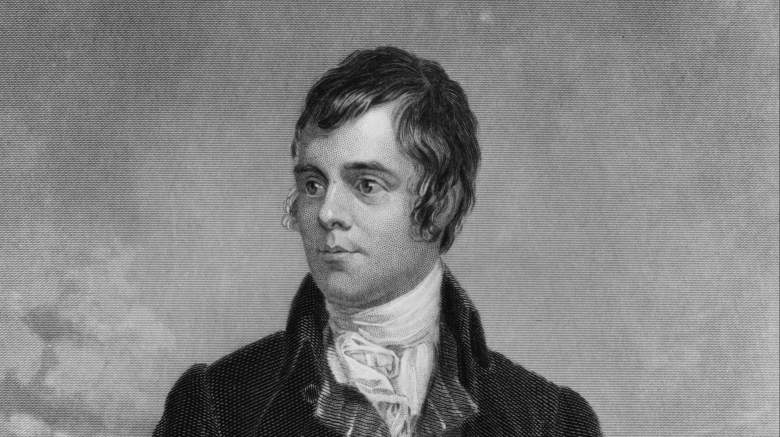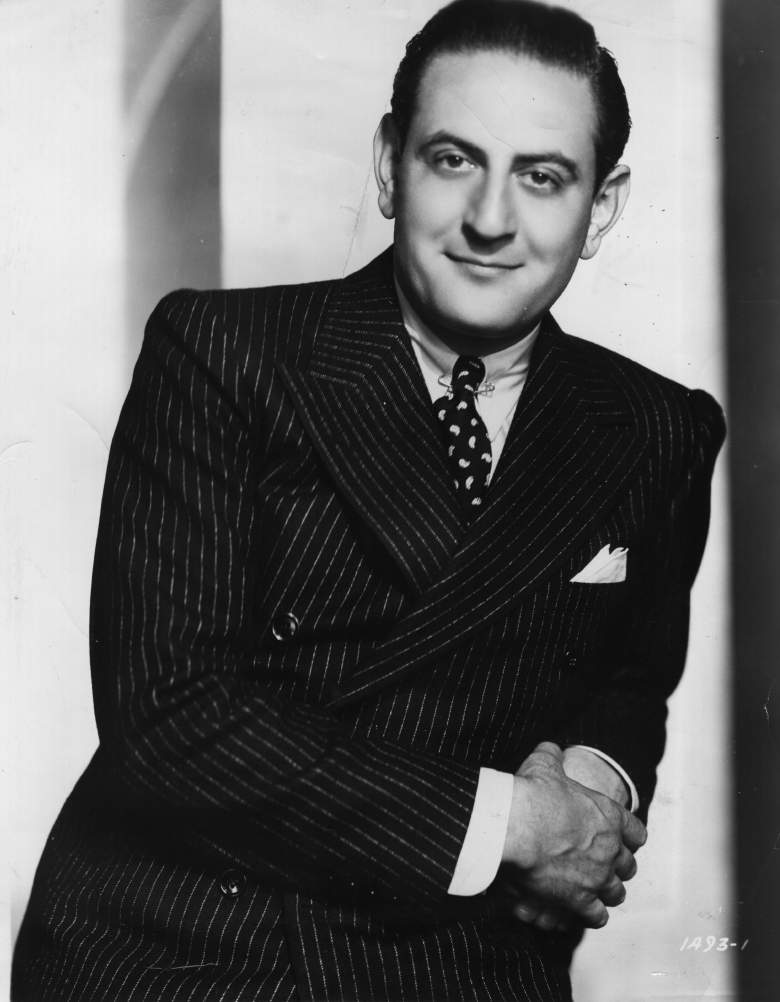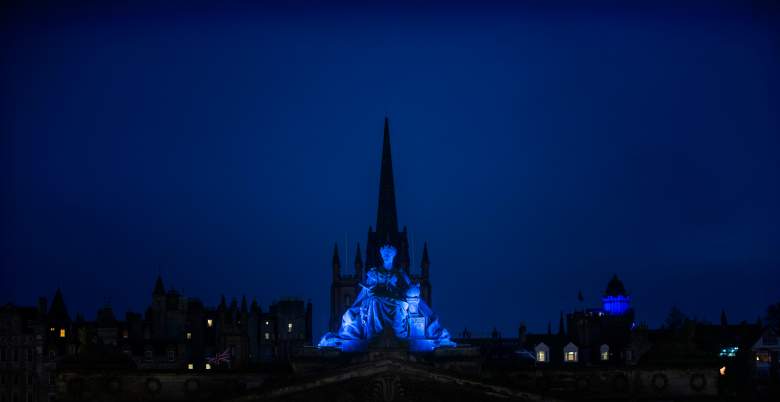
Robert Burns is the Scottish poet who wrote “Auld Lang Syne.” (Getty)
On New Year’s Eve, as the clock strikes midnight and we turn from one year to the next, everyone gathers to sing “Auld Lang Syne.” The song has become such a part of the festivities that it doesn’t even matter what it really means.
“Auld Lang Syne” is much older than any other popular song we sing during the holidays. It dates back to 1788, when it was published by Scottish poet Robert Burns, who lived from 1759 to 1796. Over 220 years later, we’re still using the familiar poem to say goodbye to the past year.
Here’s a look at the meaning of “Auld Lang Syne.”
1. The Title Roughly Translates to ‘For (the Sake of) Old Times’ In English
The phrase “Auld Lang Syne” appears in other poems that predate Burns’ more famous work. As The World on the Street notes, Allan Ramsay (1686-1758) wrote a similar poem. James Watson published similar poems in 1711. In fact, the first verse in the poem Watson published begins almost the same way as Burns.’
“Auld Lang Syne” itself can be translated to “old long since,” so it’s similar to the “Once upon a time” phrase used to open fairy tales. Since Burns wrote “for auld lang syne,” the way the phrase is used in the poem is translated to “for (the sake of) old times.”
Here’s the first verse of the Watson 1711 poem:
Should Old Acquaintance be forgot,
and never thought upon;
The flames of Love extinguished,
and fully past and gone:
Is thy sweet Heart now grown so cold,
that loving Breast of thine;
That thou canst never once reflect
On old long syne.
Here’s Burns’ first verse:
Should auld acquaintance be forgot,
and never brought to mind?
Should auld acquaintance be forgot,
and auld lang syne?
2. The ‘Auld Lang Syne’ Tune Is Played by Japanese Stores to Tell Customers They are Closing for the Day
According to the Financial Times, Burns sent “Auld Lang Syne” to two publishers. The first, James Johnson, published it in 1796 with a Scottish melody Burns was not a fan of. Three years after Burns died, George Thompson published it and set it to the turn of “Sir Alexander Don’s Strathspey.” (Strathspey is a type of dance.) This is th same melody used to this day.
The song became so popular in Scotland that Scottish immigrants sang it wherever they went, spreading the song around the world. For example, during the famous 1914 Christmas truce during World War I, both British and German soldiers sang “Auld Lang Syne.” In 1925, Charlie Chaplin had characters sing “Auld Lang Syne” in The Gold Rush, even though it was a silent film.
The song also became popular in Southeast Asia and Japanese department stores use it to let customers know they are closing for the day. In Japan, the tune of “Auld Lang Syne” is set to the folk song “Hotaru no Hikari.”
The Japanese lyrics are about students using a firefly’s light to keep studying in the dark. However, it is soon time to leave studying behind. As PRI notes, the song is also performed at graduations.
3. Bandleader Guy Lombardo Is Credited With Further Popularizing ‘Auld Lang Syne’ in the U.S. on the Radio

Guy Lombardo in 1936. He was known as “Mr. New Year’s Eve.” (Photo by Evening Standard/Getty Images)
Long before Dick Clark and Ryan Seacrest helped millions of Americans ring in the New Year, there was bandleader Guy Lombardo. In 1928, Lombardo and his band, the Royal Canadians, played their first New Year’s Eve broadcast. The following year, they performed the first ever nationwide broadcast from the Roosevelt Hotel and performed live from the hotel every year until 1954. They switched to the Waldorf Astoria Hotel, and continued performing ever year until 1976. Lombardo, who died in November 1977, became known as “Mr. New Year’s Eve.” After his death, his band rang in the New Year with broadcasts for two more years.
In 1929, Lombardo and his orchestra played “Auld Lang Syne” just as the clock was striking midnight, notes ABC News.
According to Neatorama, Lombardo was inspired to play the song after hearing it from Scottish immigrants in Ontario. (Lombardo was born in London, Ontario.) He performed the song as a segue between one broadcast and the next.
Sadly, Lombardo’s role in helping millions of Americans celebrate a new year with “Auld Lang Syne” is mostly forgotten today. In December 2012, The News-Press in Fort Myers, Florida tracked down Lombardo’s two nieces and a nephew, who have two storage units filled with Lombardo memorabilia and they could not find a museum interested in putting the pieces on display.
4. In Scotland, the Song is Sung as Part of Hogmanay Celebrations

Edinburgh on December 31, 2015. (Photo by Ross Gilmore/Getty Images for Unicef)
In Scotland, where Burns is considered the national poet, singing “Auld Lang Syne” is party of Hogmanay celebrations. Hogmanay is the Scottish word for the last day of the year. The celebration in Edinburgh has become world famous and features a Concert in the Garden that is sold out this year. Paolo Nutini is this year’s headliner.
As Scotland.org points out, it’s tradition in Scotland to sing “Auld Lang Syne” while in a circle, holding hands. When the crowd reaches the last verse, which begins with “And there’s a hand my trusty friend,” everyone crosses their arms so the right hand reaches out to their neighbor’s left hand. At the end of the song, you rush into the center and turn, so that when everyone leaves the center they are now facing outwards.
Queen Elizabeth II famously performed the Scottish tradition at the Millennium Dome for New Year’s celebrations at the start of the new millennium. However, she was criticized for not looking enthusiastic about celebrating with then-Prime Minister Tony Blair.
5. Sally Is Right: ‘Auld Lang Syne’ Really Is About ‘Old Friends’
Rob Reiner’s When Harry Met Sally…, which was written by Nora Ephron, reaches a climax on New Year’s Eve. As “Auld Lang Syne” plays at the party, Billy Crystal’s Harry wonders what the song is all about.
“What does this song mean? My whole life, I don’t know what this song means,” Harry asks Sally. “I mean, ‘Should old acquaintance be forgot’? Does that mean we should forget old acquaintances, or does it mean if we happen to forget them, we should remember them, which is not possible because we already forgot them?”
“Well, maybe it just means that we should remember that we forgot them or something. Anyway, it’s about old friends,” Sally (Meg Ryan) tells Harry. She was right.
Burns didn’t really mean that we should forget old acquaintances. As Scotland.org notes, the song is really meant to be about “preserving old friendships and looking back over the events of the year.” So, if you do forget about old acquaintances, you can look back on the year and remember them.
Here are the complete “Auld Lang Syne” lyrics by Robert Burns, from The BBC:
Should auld acquaintance be forgot,
And never brought to mind?
Should auld acquaintance be forgot,
And auld lang syne!For auld lang syne, my jo,
For auld lang syne,
We’ll tak a cup o’ kindness yet,
For auld lang syne.And surely ye’ll be your pint stowp!
And surely I’ll be mine!
And we’ll take a cup o’ kindness yet,
For auld lang syne.We twa hae run about the braes,
And pou’d the gowan fine;
But we’ve wander’d mony a weary fitt,
Sin’ auld lang syne.We twa hae paidl’d in the burn,
Frae morning sun till dine;
But seas between us braid hae roar’d
Sin’ auld lang syne.And there’s a hand, my trusty fiere!
And gie’s a hand o’ thine!
And we’ll tak a right gude-willie-waught,
For auld lang syne.For auld lang syne, my jo,
For auld lang syne,
We’ll tak a cup o’ kindness yet,
For auld lang syne.
